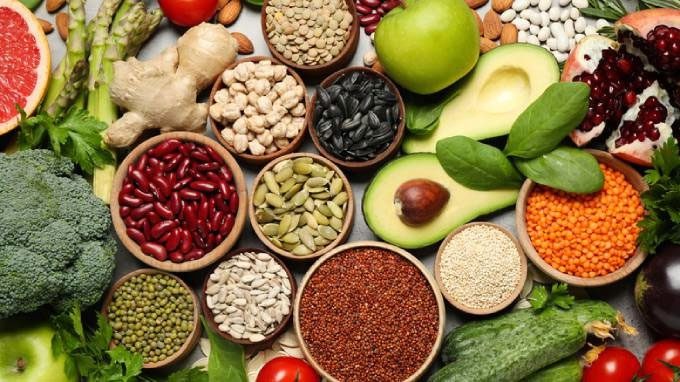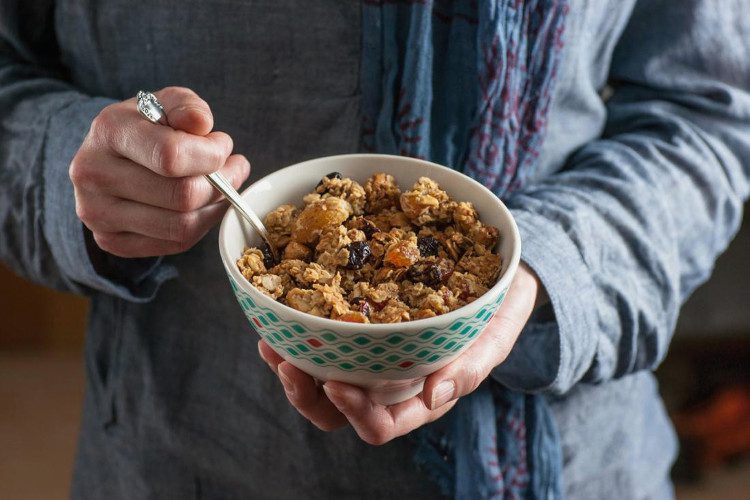Excessive fiber intake can cause bloating and constipation. To alleviate discomfort in such cases, drinking plenty of water, exercising, and adjusting your diet can be helpful.
Some uncomfortable symptoms due to excessive fiber may occur when a person consumes more than 70g of fiber daily. This is not uncommon and can frequently happen if someone follows a strict vegetarian diet for about a week.
In this article, we will explore how much fiber is considered excessive and how to know if your body is getting too much fiber. Additionally, we will discuss treatment methods and good sources of fiber for the body.
What is Fiber?
Fiber is a type of carbohydrate that the body cannot digest or absorb. Fiber is found only in plant foods, such as fruits, vegetables, nuts, seeds, and whole grains.

Fiber is abundant in various vegetables, fruits, and nuts.
There are two types of fiber: soluble and insoluble. Soluble fiber, when combined with liquid, forms a gel-like substance that is essential for good digestive health. According to the Centers for Disease Control and Prevention (CDC), soluble fiber also helps reduce LDL cholesterol levels—the “bad” cholesterol. Some sources of soluble fiber include bananas, apples, oats, berries, and avocados.
Insoluble fiber typically does not dissolve in liquid. It absorbs water into our waste, making it easier to pass stool with less strain on the intestines. Insoluble fiber can help enhance gut health. It also supports insulin sensitivity and, like soluble fiber, may help reduce the risk of diabetes and aid in weight loss. Some sources of insoluble fiber include nuts, corn, whole wheat flour, and the skins of various fruits and vegetables.
Eating enough fiber is crucial for health. Fiber helps manage cholesterol levels, prevents heart disease, stabilizes blood sugar, enhances digestive health, treats or prevents constipation, and promotes a feeling of fullness.
How Much Fiber is Too Much?
Fiber is the indigestible part of plant foods and carbohydrates. Foods such as lentils, vegetables, and grains are high in fiber.

Consuming more than 70g of fiber daily can lead to uncomfortable symptoms.
Generally, cases of excessive fiber intake are less common than cases of insufficient fiber intake. Only about 5% of Americans consume the recommended amount of fiber.
The optimal fiber intake varies based on gender, age, and pregnancy status.
The Institute of Medicine recommends the following daily fiber intake:
- 25g/day for adult women.
- 38g/day for adult men.
- The required fiber intake decreases after age 50 (21g for women, 30g for men).
- The required fiber intake increases for pregnant or breastfeeding women (at least 28g/day).
A fiber-rich diet is essential for ensuring a healthy digestive system. It also helps lower blood pressure and reduces the risk of heart disease, diabetes, and obesity.
However, consuming more than 70g of fiber daily can lead to uncomfortable symptoms. Some individuals may experience these symptoms when consuming more than 40g of fiber.
When eating high-fiber foods like fiber bars and whole grain bread, ensuring 70g of fiber per day is not difficult.
A healthy diet that includes oatmeal for breakfast, a sandwich, and fruit or vegetables for lunch and dinner with whole grains and lentils can meet that requirement.


















































